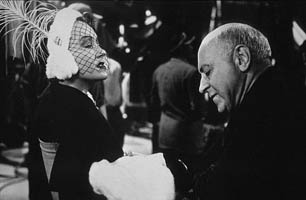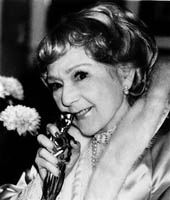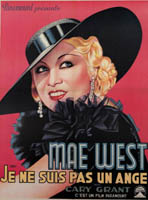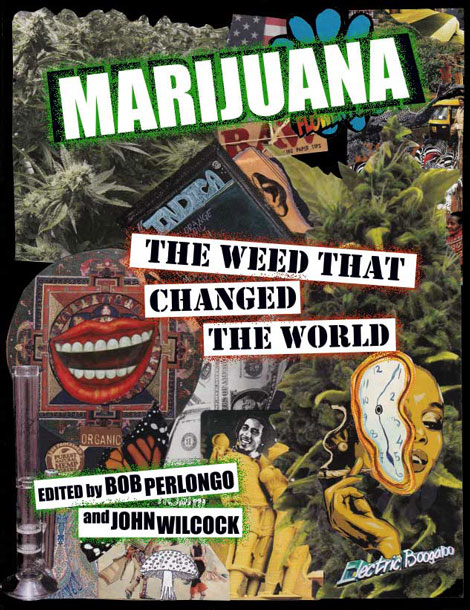
The Column of Lasting Insignificance: September 20, 2014
by John Wilcock
“The two most engaging powers of an author are to make new things familiar, familiar things new.”
— William Makepeace Thackeray
Letter from the Editor:
AFTER ABOUT five months in hospital, I am finally beginning to see the future which I hope will bring me back into the real world. My mind is fine, though lacking memory to the extent that i fail to recognise authorship of things that I wrote mere months ago. My hearing is almost useless without hearing aids; my sight is restricted to an area than begins about one inch to the right and stretches to about three inches to the left if I keep my head still. This means that when I read, I have to move my head at least once to read every line which is unfortunately not fast enough to read a subtitle before it is replaced by the one that follows it.
Fortunately I have written at least 500 columns since I went online and surprisingly many of them seem to be relatively timeless so that they remain readable even a couple of years later. I still cannot write legiby without a computer and on this only very slowly. But I will respond to anybody who writes to me and my friend David will continue to fill this space weekly with golden oldies.
—Blessed be, John Wilcock, Sept. 12, 2014
From my Autobiography Manhattan Memories

Chapter 23: Naked in the West
Sunset Boulevard
Nudes vs. Prudes
Viva Las Vegas

Just as Paramount Pictures stood not on Sunset Boulevard itself so, with appropriate irony, the rambling mansion of the eponymous movie, the home to Norma Desmond in Billy Wilder’s classic movie, actually stood at the corner of Crenshaw Street on Wilshire Boulevard. It was demolished in the late 1950’s and replaced with a sleek insurance company building. Built at a cost of $250,000 in 1924 for William O. Jenkins, U.S. consul to Mexico, its 14 rooms featured costly interior paneling, imported tiles and a black walnut staircase at whose foot was a 10-foot-square walk-in vault. Exterior walls of steel and concrete, lined with brick, were 13 inches thick. Jenkins, who lived in the house for only a year, was a sugar baron reputed to be the richest man in Mexico.
Producer Charles Brackett and director Billy Wilder found the house after a long, unsuccessful search along Sunset Boulevard itself. The mansion was by now in the possession of one of billionaire J. Paul Getty’s former wives, who insisted that the pool to be installed in the grounds for the movie should be removed afterwards if she didn’t like it. As it happened, the pool remained (without plumbing, and empty) to be used again for a scene in Rebel Without A Cause. In addition to the pool, the mansion was equipped with stained glass windows, palm trees, overstuffed furniture, dusty velvet drapes and a pipe organ. A $25,000 Isotta Fraschini was parked in the driveway after first being equipped with leopard skin upholstery and a gold-plated telephone.
The movie came about, Brackett explained, “because Wilder, Marshman (the third writer) and I were acutely conscious of the fact that we lived in a town which had been swept by social change (as) profound as that brought about in the old South by the Civil War. Overnight, the coming of sound brushed gods and goddesses into obscurity. We had an idea of a young man stumbling into a great house where one of these ex-goddesses survived. At first we saw her as a kind of horror woman…and embodiment of vanity and selfishness. But as we went along, our sympathies became deeply involved with the woman who had been given the brush by 30,000,000 fans”.
The spot that the Paramount company actually began, was at that world renowned corner, Sunset & Vine, where a plaque celebrates Jesse Lasky and Cecil B DeMille’s The Squaw Man which in 1913 became Hollywood’s first feature-length movie. A time capsule buried in 1954 with relics from the day was found to have been infiltrated by water when it was dug up 50 years later, and has been replaced by another in a steel box containing DVDs of current TV shows and other showbiz ephemera; due for recovery in 2037.

Legendary director Cecil B. DeMille was corralled to play himself in Sunset Boulevard, taking direction from Wilder through 10 pages of script spread over four scenes. There were an average of seven takes for each scene. “I don’t suppose Paramount will pick up my option after this”, joked DeMille , after fluffing his lines. “Mr. DeMille was too courteous to make suggestions”, Wilder confessed, “and I was too afraid. I (felt) like a man about to explain satire to George Bernard Shaw”. Unlike DeMille, Erich Von Stroheim—who played Norma Desmond’s butler/ex-husband, was eager to help with the direction, offering unsuitable suggestions in an attempt further to enhance his character. Columnists Louella Parsons and Hedda Hopper were both invited to play bit parts but only Hopper, who had been an actress herself, accepted.
|
|
|
|
 |
When the producers sought a lead actress to play Norman Desmond, Swanson was not the first choice. Wilder was first rebuffed by an indignant Mae West, 55 who was angry to be thought of as a has-been. He was then turned down by Mary Pickford, 57, who wanted the part rewritten so that the movie would focus more on her.
Pola Negri, then 51, whose lovers had included Charlie Chaplin and Rudolph Valentino, was rejected on the basis of her incomprehensible Polish accent.
Swanson, recommended by director George Cukor, had left Hollywood after a near-flop, Music in the Air (1934), only returning for the disappointing Father Takes a Wife (1941), but had scored a hit on Broadway with A Goose for the Gander and was now hosting a television talk show. She had forgotten Wilder, even though he had co-written the script for Music in the Air, and was annoyed at being asked to come west for a screen test.
“What the hell do you have to test me for? You want to see if I’m alive, do you? Or do you doubt I can act?” Just turned 50, she had made 45 previous films, beginning as a 14-year-old extra in a movie starring Wallace Beery (whom she later married) and by 16 was playing in Mack Sennett comedies. By 1924 she was making $10,000 a week and was the second woman in Hollywood to make $1,000,000 (after Mary Pickford). She had never taken a screen test.
She had been a big star well before the fabulously successful Sadie Thompson (1928) and habitually threw lavish parties in her 22-room mansion opposite the Beverly Hills Hotel, hiring one footman per guest and sometimes giving away hundreds of gold compacts or cigarette cases as party favors. “The public wanted us to live like kings and queens…We were making more money than we ever dreamed existed and there was no reason to believe it would ever stop”, she reminisced.
George Cukor called her in New York to plead Wilder’s case. “Oh, he is so persuasive, charms the birds out of the trees, that dear man. He said this was the greatest part of my life and I’d be remembered for this part. So I took the test.” The results were so impressive that Wilder and Brackett rewrote the Norma Desmond role, ironically the way Pickford had requested.
All this, I hoped, would be interesting history to audiences at London’s Adelphi Theatre where the world premiere of Andrew Lloyd Webber’s production, with Patti LuPone in the lead role, was held on 12 July 1993. It racked up 1,529 performances toured internationally and won three Tony Awards although the expenses were so huge it actually lost money.
In this a-historical, ever-changing city, many of the old landmarks had to be recreated before filming of Sunset Boulevard could begin. Replicas of the County Morgue as well as Schwab’s Drug Store were built on Paramount’s Stage 5 and location shooting began at the Bel Air golf course and on Hollywood streets. The movie began with a scene in the morgue, for which 30 extras had been hired to lie motionless on slabs, but when the film was sneak-previewed in a small mid-Western town the audience couldn’t stop laughing. Wilder slipped out, encountered a woman near the powder room and asked how she liked it so far. “I have never seen such a pile of crap in all my life”, she replied.
The rewrite took six months, mainly to fix the opening, which now featured police cars screaming down Sunset with sirens blaring and Holden’s off-screen voice saying that he’d died. This time the movie was previewed on the Paramount lot with an audience of industry insiders. Many enjoyed it, some were stunned but Louis B. Mayer, Hollywood’s ranking mogul, was outraged. “You bastard”, he shouted at Wilder. “You have disgraced the industry that made and fed you. You should be tarred and feathered and run out of Hollywood.” Barbara Stanwyck obviously didn’t agree. Kneeling at Gloria Swanson’s feet, she kissed the hem of her gown. The two women embraced, sobbing.
First published in 2010 and available on amazon.com and lulu.com
“Are not there little chapters in everybody’s life, that seem to be nothing, and yet affect all the rest of the history?”
— William Makepeace Thackeray, Vanity Fair
it’s here…



